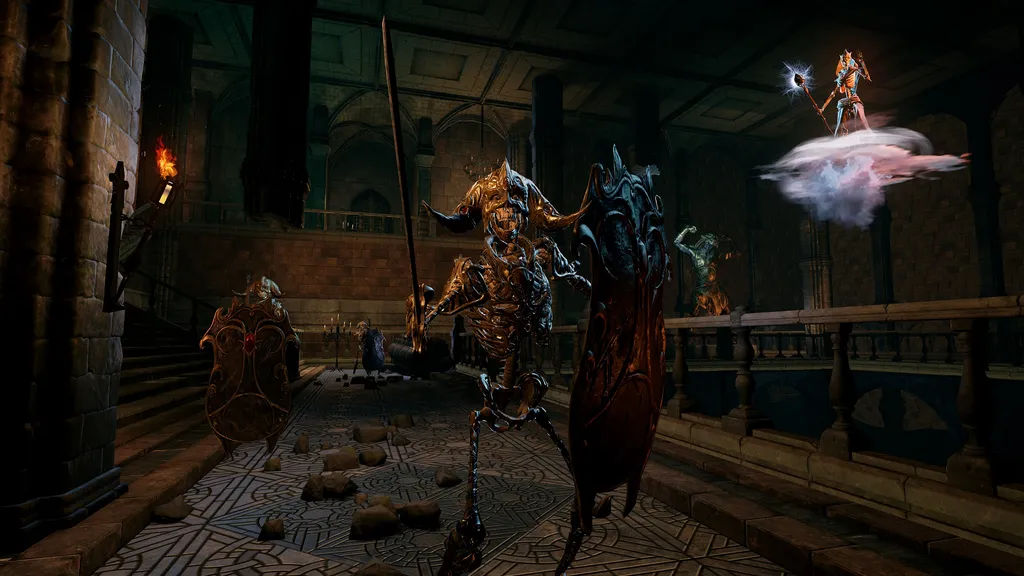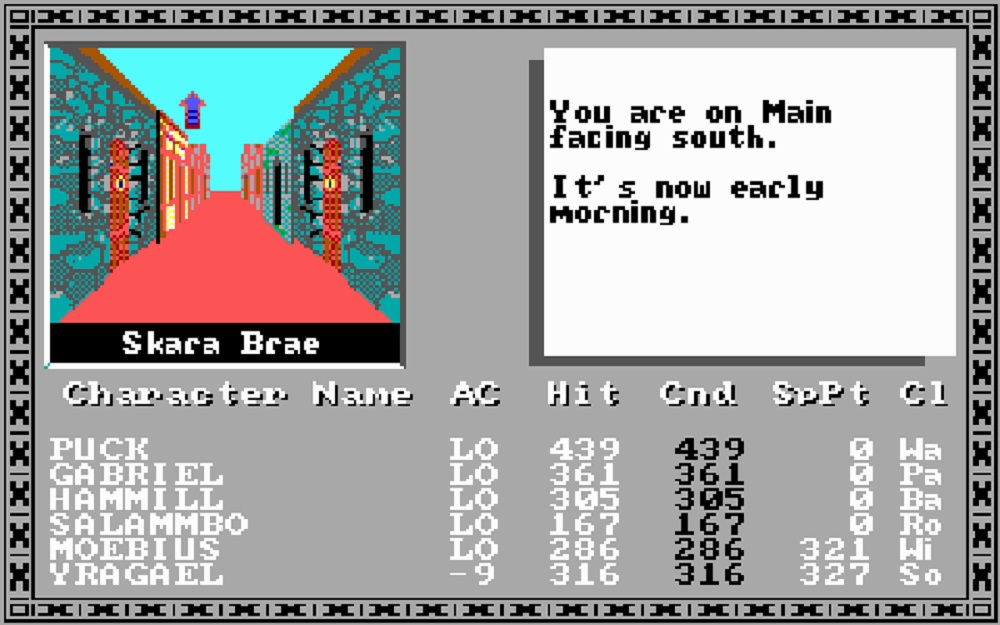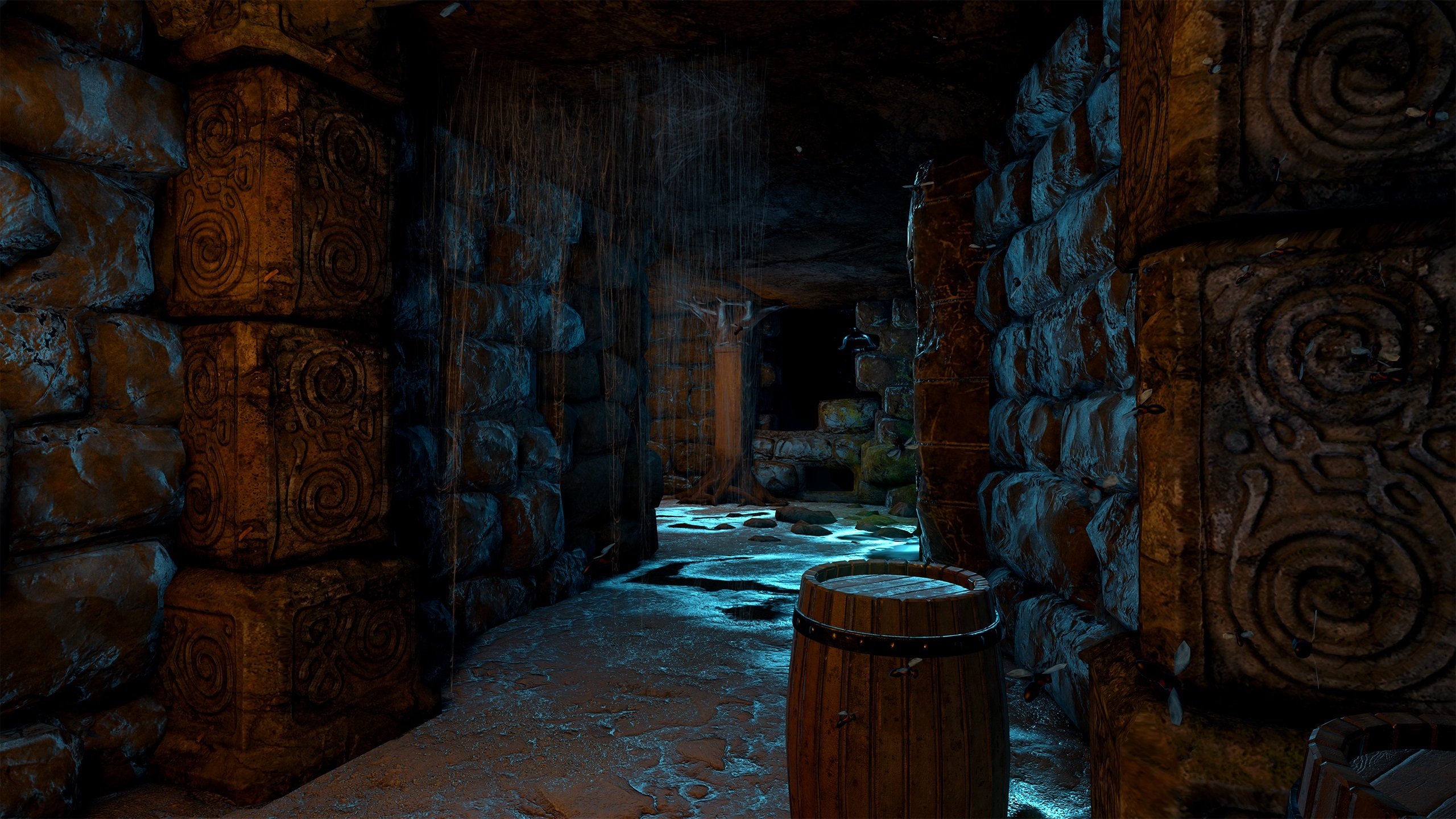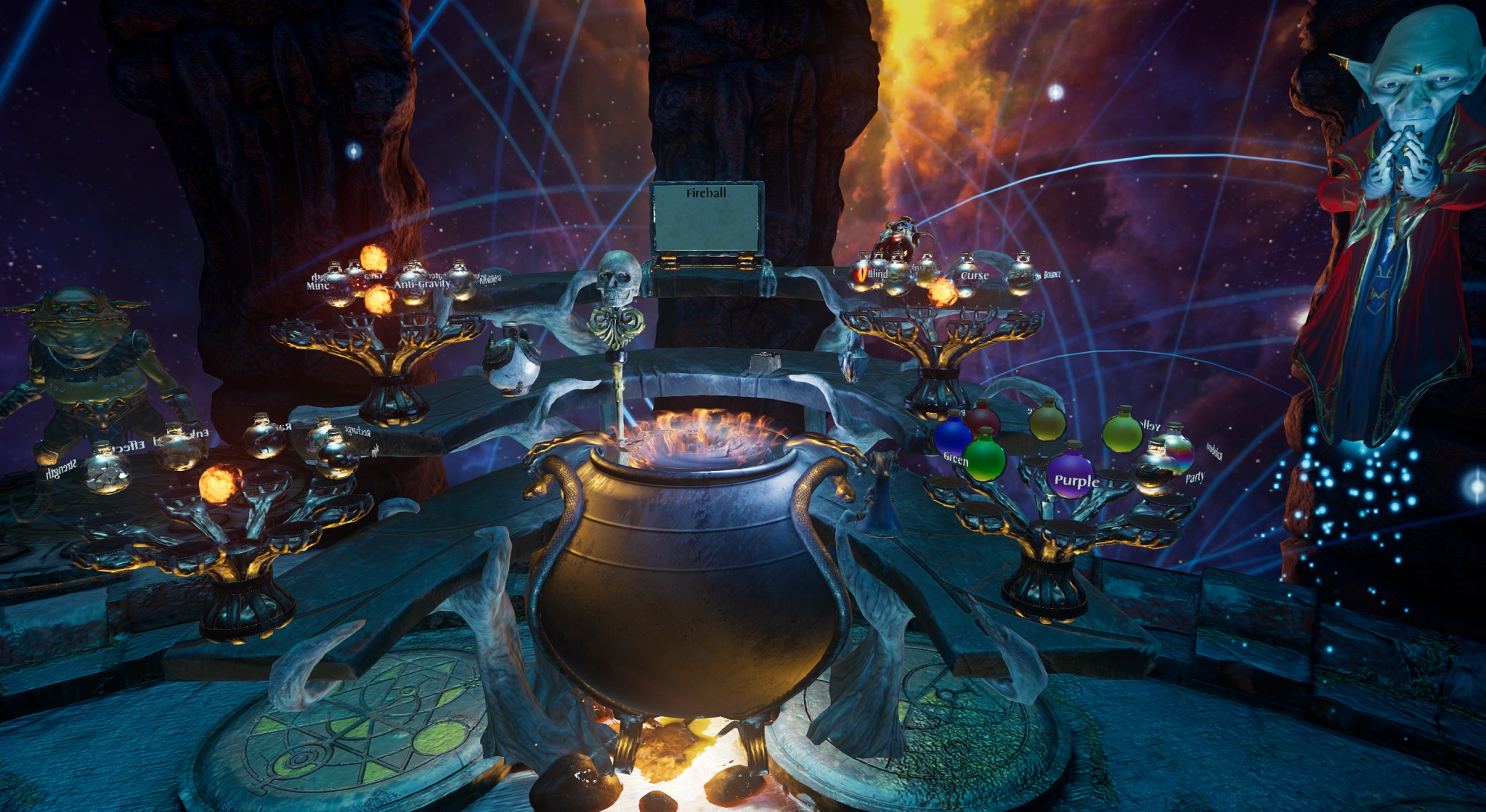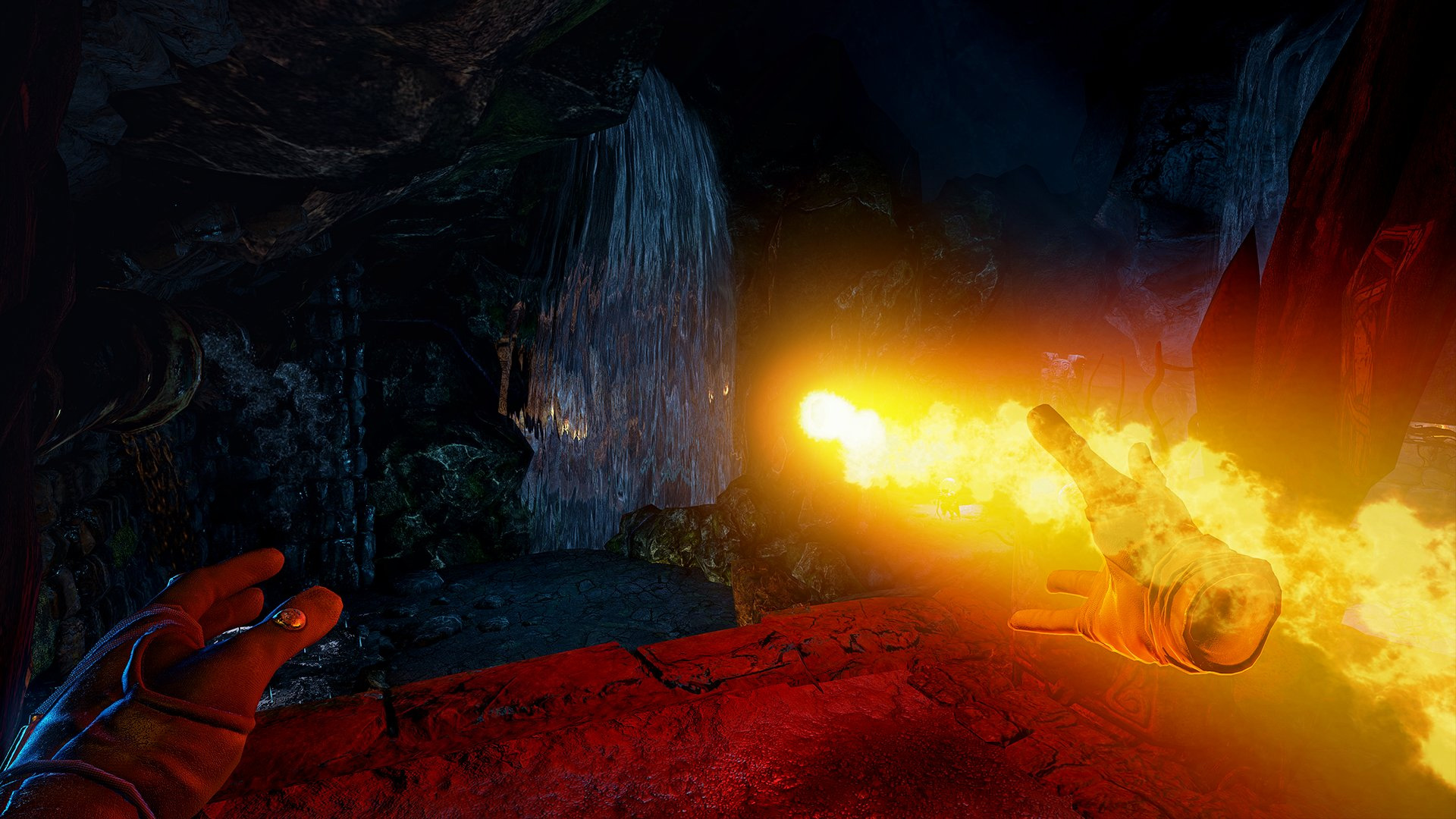The dungeon crawl RPG isn’t quite as popular nowadays as it used to be — at least, not in its most traditional form. Created as a way of adapting the likes of Dungeons & Dragons to a digital computer game interface mixed with the tenants of text adventures like Zork, the first dungeon crawlers were visually sparse and full of ambition, nothing like modern entries in the genre such as The Mage’s Tale in VR .
You’d view everything from the first-person perspective in a static window often with no animation while you selected options and commands for your party to perform as you explored the depths of the world’s darkest dungeons. By today’s standards it sounds archaic when you look at the likes of Skyrim VR, but at the time it was the most transportive experience available.
It All Started With A Bard
And in 1985 a little game named Tales of the Unknown: Volume I, more commonly referred to by its subtitle, The Bard’s Tale (pictured above,) became a best-seller and informed the design principles of an entire generation.
The team behind that game, Interplay, went on to be associated with the likes of the Baldur’s Gate, Wasteland, and Fallout franchises. Brian Fargo was a key industry figure on all of these projects taking up the mantle of everything from Writer to Executive Producer. Now his current company where he serves as CEO, inXile Entertainment, just recently launched Torment: Tides of Numenera as a spiritual successor to the acclaimed Planescape: Torment and are currently working on Wasteland 3 as well The Bard’s Tale IV, the first mainline entry in that franchise in almost 30 years.
Now they’ve also just recently released their very first VR game called The Mage’s Tale. It takes place in the same universe as The Bard’s Tale and has players assume the role of an up and coming wizard. You explore dungeons, solve puzzles, avoid traps, and fight back against countless enemies across 10 different dungeons and close to a dozen hours of content making it one of the largest and most elaborate VR titles to date. We really enjoyed it in our review.
The Mage’s Tale has been a long-time coning.
“From the very first time I tried VR I knew I wanted to make a dungeon crawler,” said Fargo during an interview with UploadVR. “I first tried that early Oculus Rift demo with the dinosaur in the hallway years ago. At that moment when I saw the dinosaur I just thought, ‘Oh my gosh! I have to do a dungeon crawl game in VR!’ because it just seemed like such a great opportunity to put you in the dungeon. You could look around and really feel like you were there.”
The transportive capability of VR is one of its most prominent strengths. When you’re playing an old-school dungeon crawl game like The Bard’s Tale, Might & Magic, Wizardry, or one of countless licensed Dungeons & Dragons games that came later on, it feels almost like you’re gazing through a window into another world. With VR headsets, you can tear down the wall, step through the window, and truly feel immersed in the environment instead.
“Unlike the old days when you’re just sitting at your desk, seeing a monitor, only concerned with what’s on the screen, now we have players that are looking around in the world itself, not just a screen,” explained Fargo. “Creatively it’s so different than what’s been done before.”
Learning to Dungeon Crawl Before You Can Walk
One of the biggest differences between the old games Fargo used to work on like the original Bard’s Tale titles and The Mage’s Tale is that traditionally you’d control an entire party of people and move them all together, in unison, through dungeons as one unit. That doesn’t really work well when you ask a player to physically move around in VR. You only have one set of arms and two eyes to look around so it didn’t seem appropriate to have players control an entire party that way.
“Games that are primarily party-based just don’t lend themselves well to VR because you’re supposed to feel immersed,” said Fargo. “Keeping things like the UI in mind just changes things. We had to get rid of all of the stats and sheets of information that’d usually be on-screen to look at since that takes you out of the realm. The biggest thing we learned is the importance of putting presence at the front of the experience.”
Another major difference is that most of the older games were turn-based. In that system you’d see an enemy appear in front of you, you’d tell your fighter to hit it with his sword, a number on the screen shows how much damage you did, then the enemy attacks and hits one of your party members, followed by someone else’s turn, and so on. That doesn’t really work for a VR game. A developer can’t tell a player that, even though they have the ability to move around and do things, that they can’t attack or move because it isn’t their turn. That just isn’t how presence works.
Just like Rand Miller (the creator of Myst) had to rethink how to make an adventure game in VR with Obduction, Brian Fargo had to rethink how to make a dungeon crawler RPG in VR for The Mage’s Tale.
“One of our earliest iterations of The Mage’s Tale was actually turn-based,” said David Rogers, Lead Designer at inXile Entertainment, during the same interview. “You’d have the goblin go, then you throw a fireball, then the goblin goes again, and so on. That never felt weird when looking at a monitor but it feels out of place in VR. The combination of first-person and VR made it not feel right and took you out of the experience.”
Going back to the concept of putting presence and agency first, that logic informed the entire game’s design process. When you play an old dungeon crawler and try to click and cast a fireball at a wall for no reason other than you feel like it, nothing happens. Combat isn’t going on so an attack can’t be used. But in VR when playing The Mage’s Tale you can totally throw fireballs and lightning bolts all around however many times you’d like. That sense of freedom is what makes it so effective.
Due to the game’s focus on that core concept — being a mage — some ideas had to be cut though, like detailed melee combat systems. In the game you don’t really pick up and use melee weapons, or any weapons at all for that matter, as you instead get to mix and create your own magical spells. You are a powerful mage in a fantasy world, after all.
“We wanted to nail the core objective of making a badass wizard,” explained Rogers. “And in doing so, we didn’t want to split development time between nailing the haptics and hitting the right areas of enemies and having them react. We thought about the experience we’re trying to make and we just asked each other, “Why would you use a sword if you can use ice javelins and lightning instead?” It came down to us not wanting to muddle the message. And our goal was never razor’s edge difficulty with you on the verge of death at all times, we just wanted to fulfill the dream of being a powerful wizard.
Building for the Future
Now that The Mage’s Tale has been out for a while inXile Entertainment is focused on making it even better. Some of the biggest gripes about the core game are that the loading times were way too long and there was no full, smooth locomotion option at all. Movement was restricted to either teleporting or incremental steps. An upcoming update is aiming to fix both of those areas.
On top of that, it’s been announced that inXile has closed funding with gumi Inc. for a total of $4.5, part of which is going towards the funding of a brand new VR game that will be a social, open-world RPG. We’re crossing our fingers for a VR version of Wasteland.
At this point in the life cycle of VR it makes sense that the people that helped popularize dungeon crawlers in the 80s would be trying to popularize them again for a new audience on a new platform. The best way to move forward sometimes is to look back and learn from the past.
The Mage’s Tale is currently available for $39.99 exclusively on Oculus Home for the Rift and Touch. inXile is aiming to bring the game to other VR platforms sometime next year.

